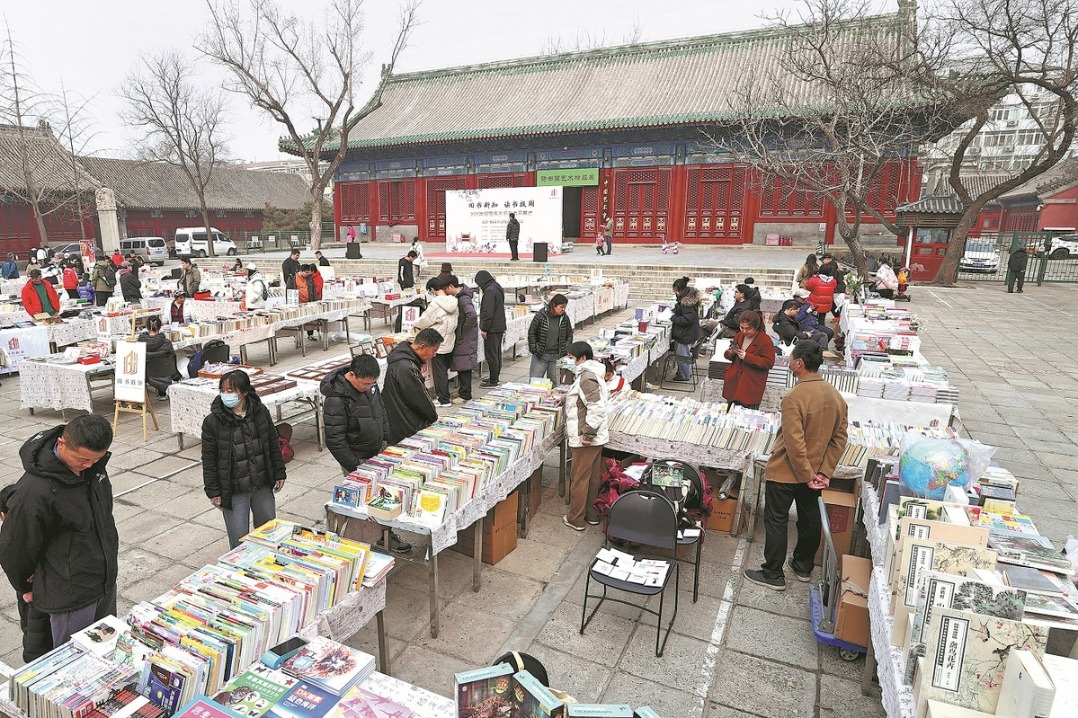Country feels the heat as avg June temperature matches 64-year high

As heatwaves swept across the nation, the average temperature in June soared to 21.1 C, a 0.9 C increase from historical averages for the same period, tying with 2022 as the highest for this time frame since 1961, said the China Meteorological Administration on Friday.
As of June 25, most parts of the nation have grappled with temperatures soaring above the norm. The southern part of North China, the Huanghuai region and the Xinjiang Uygur autonomous region experienced temperatures surpassing average levels by 2 to 4 C.
Notably, Xinjiang registered an average temperature of 25 C in June, the highest since 1961, while Sichuan and Shandong provinces saw average temperatures peak at 23.1 C and 26.2 C, respectively, ranking as the second highest for this time frame, said Xiao Chan, deputy director of the National Climate Center.
Additionally, 102 meteorological stations nationwide logged daily high temperatures that shattered historical records for June, with 17 of them, including Tongnan in Chongqing municipality and Hejiang in Sichuan province witnessing temperatures hitting or exceeding 40 C, said Xiao.
In June, the nation experienced an average precipitation of 85.8 millimeters, 3.4 percent higher than the usual amount for the same period. Northeast China, the northern regions of North China, along with the middle and lower stretches of the Yangtze River, and southern parts of South China received above-average rainfall. The middle and lower reaches of the Yangtze River saw rainfall levels surge by 50 percent to twice the usual amount. Meanwhile, 30 meteorological stations in Jilin, Jiangsu, Hubei and Guizhou provinces reported record-breaking daily rainfall for June, according to Xiao.
Three significant heavy rain spells gripped the southern regions through the month. From June 17 to 23, intense rainfall hit the eastern parts of the southwest region, the Huanghuai region and South China. Several rivers in the south overflowed, with the Huaihe River upstream in Huaiji experiencing a once-in-a-century major flood, said Xiao.
Over the next 10 days, heavy rainfall is expected to shift further northward, affecting North China, Northeast China and the eastern parts of the northwest region. Precipitation levels are expected to be 30 to 70 percent above normal, with some areas receiving double the usual rainfall. A particularly intense rainfall event is forecast from July 2 to 4, along with thunderstorms and strong convective weather.
The CMA has urged the public to be prepared for heavy rainfall-induced floods and associated risks like mountain torrents, landslides, mudslides and urban flooding.
Starting Friday, North China saw relief from high temperatures due to increased cloud cover and precipitation. However, high temperatures are expected to sustain in some parts of southern China, with daytime highs ranging from 35 to 39 C and exceeding 40 C in some areas, according to Dai Kan, deputy director of the National Meteorological Center.
Dai warned about the increased risk of heat-related illnesses during the upcoming period of high temperatures. Precautions such as heatstroke prevention, cooling measures and staying hydrated are strongly advised, he said.
In July, it is projected that two to three typhoons will make landfall or hit China, with their intensity expected to be close to the annual average. The affected areas will mainly be concentrated in East China and South China, with one potent typhoon forecast to move northward and affect northern regions.
The meteorological administration has advised relevant departments to prepare emergency plans to address the risks of heavy rainfall-induced floods, strong winds, storm surges, and to ensure the safety of people's lives and property.
- Shanghai sees surge in overseas visitors
- Country feels the heat as avg June temperature matches 64-year high
- Kazakhstani student embraces Chinese culture in Xi'an
- China's top legislator meets Ecuadorian president
- Zhejiang launches AI travel assistant to help visitors to the province
- China moves to boost low-altitude economy through legislation





































